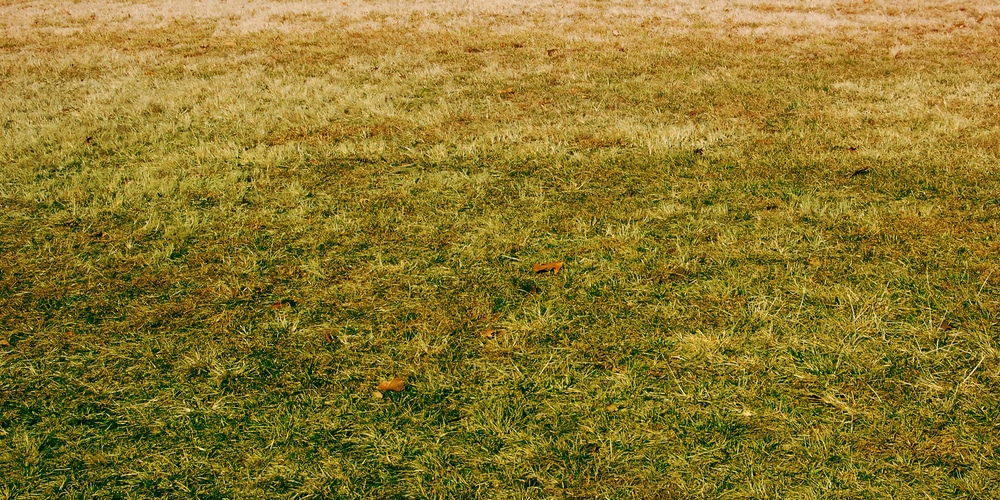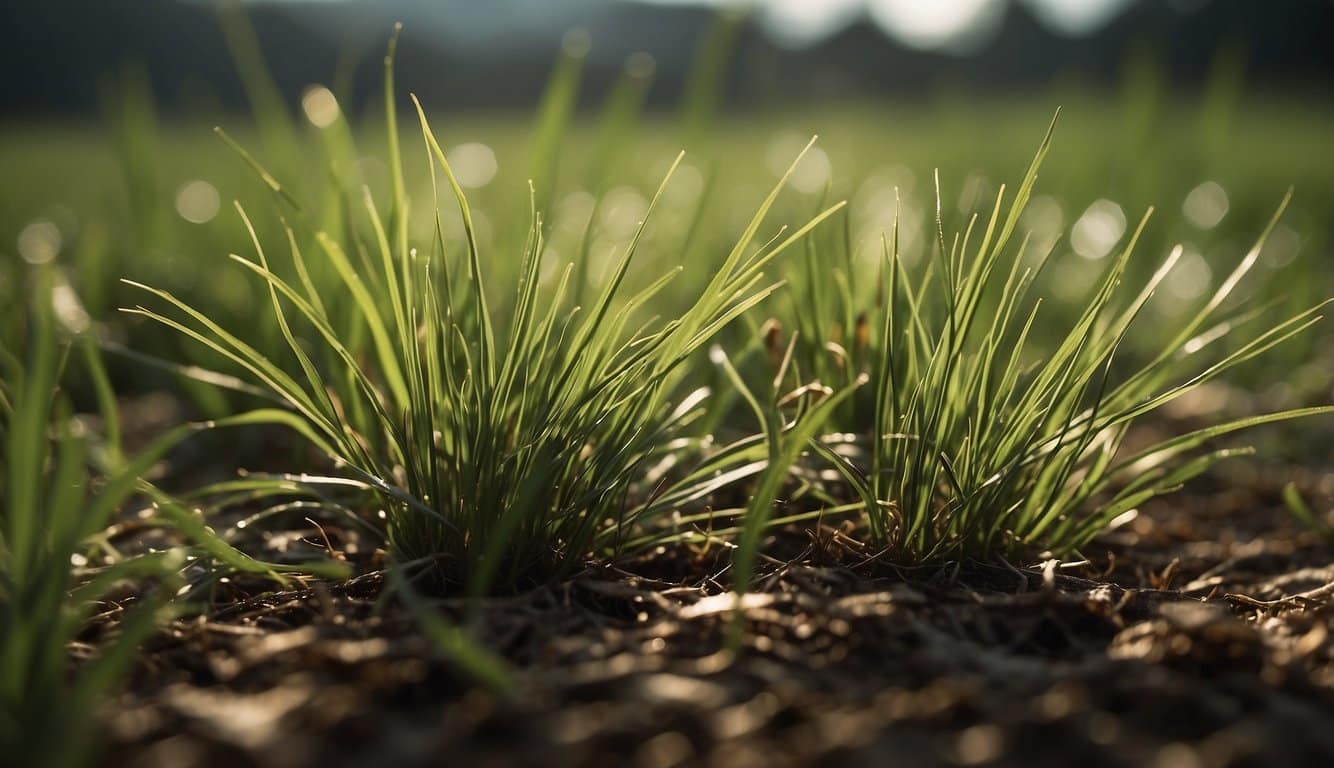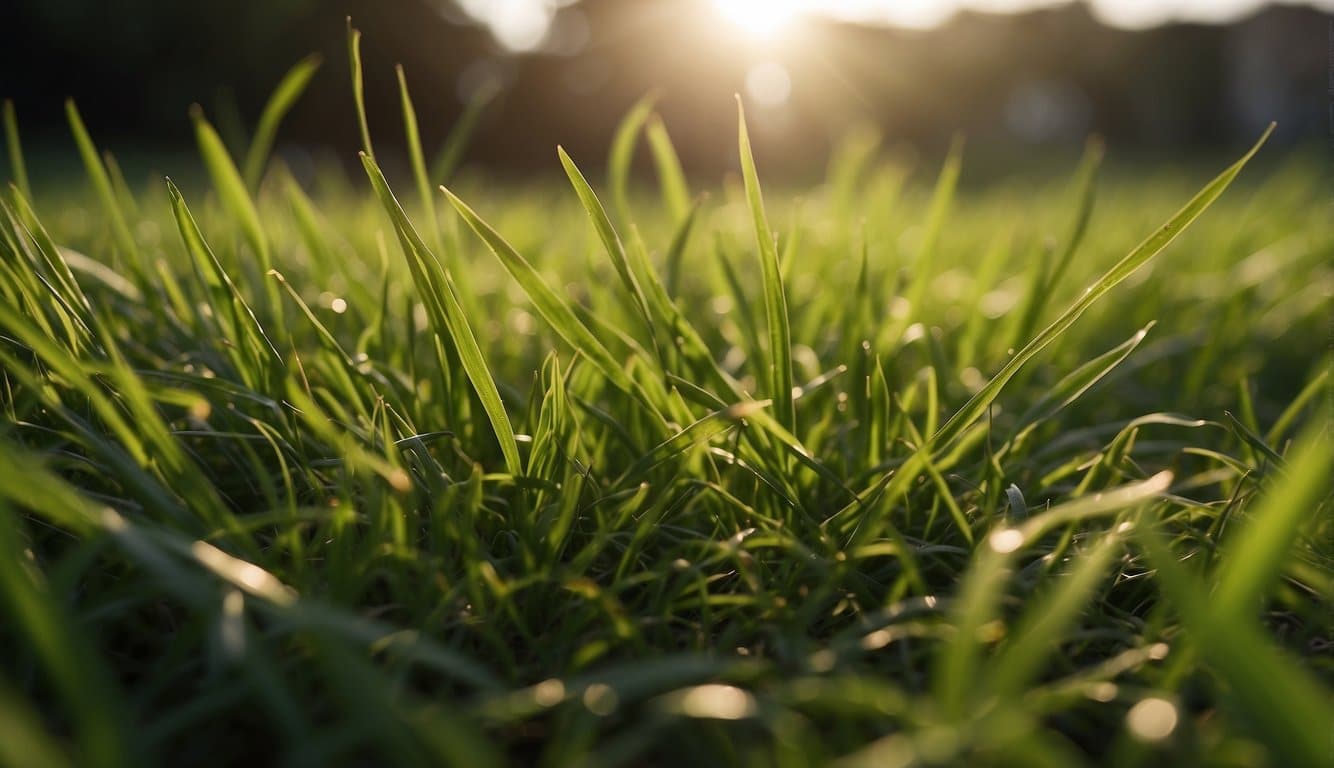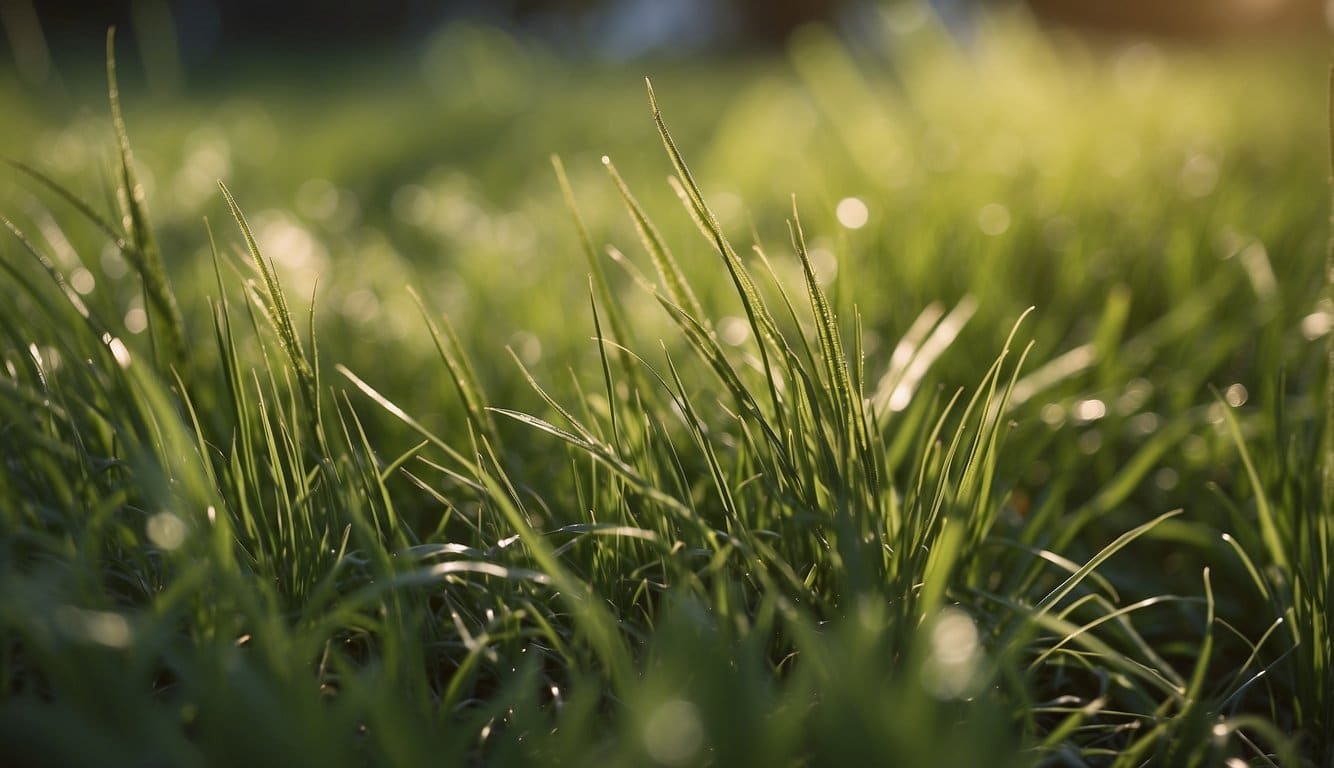A lush, green lawn is the pride of many homeowners, a symbol of healthy plant life and diligent care.
However, it can be puzzling and frustrating when the grass that appears vibrant and lush from a distance reveals a brown, less vigorous base upon closer inspection.
Understanding the dichotomy of green tops with brown bottoms is essential to diagnosing the health of a lawn and implementing the correct maintenance strategies.

The color discrepancy in grass can be attributed to various environmental and biological factors.
From the natural growth cycle of grass blades to the impact of soil conditions and lawn care practices, the nuances of grass health are intricate and interconnected.
A comprehensive approach to lawn maintenance is crucial to promoting uniform color and vitality from root to tip.
Key Takeaways
- Proper lawn care promotes uniform green coloration from root to tip.
- Soil health, including pH levels and nutrient balance, is essential for grass pigmentation.
- Regular maintenance such as dethatching and correct watering supports grass health.
Grass Anatomy and Growth Patterns
Understanding the structure of grass and how it grows is essential to diagnosing issues such as grass appearing green on top and brown underneath.
Components of Grass Blades
Grass blades are the most visible parts of the grass plant and exhibit a few key parts:
- Blade: This is the extended part of the grass that’s typically green and is responsible for photosynthesis.
- Ligule: The tissue where the blade and sheath meet, often a significant marker for species identification.
- Sheath: The lower part of the blade that wraps partially around the culm.
Each blade consists of layers that contribute to its overall health and coloration:
- Epidermis: The outer layer that protects against pests and disease.
- Mesophyll: Contains chloroplasts which facilitate photosynthesis, giving the grass its green color on top.
- Vascular bundles: Support water and nutrient transport.
Roots and Soil Interaction
The roots of the grass plant interact with the soil in several critical ways:
- Water absorption: Roots extract water and dissolved nutrients essential for growth.
- Anchoring: A grass plant’s root system helps secure the plant in the soil, which can affect the color seen above ground if compromised.
The soil matrix also plays a pivotal role in grass health:
| Aspect | Effect on Grass Coloration |
|---|---|
| Soil pH | Influences nutrient availability and uptake. |
| Soil Fertility | Nutrient-rich soil promotes healthy, green grass. |
| Soil Compaction | Can lead to inadequate root growth and poor water infiltration, causing stress and potential browning. |
Healthy interaction between grass roots and soil ensures the uppermost parts of the blades can maintain their lush green color, while preventing browning that might occur closer to the ground.
Factors Influencing Grass Pigmentation
Understanding the reasons why grass may display a luscious green on top yet a concerning brown beneath can inform proper lawn care techniques.
These variations reflect the interplay of environmental conditions, plant genetics, and nutrient access.
Environmental Factors
Water and Oxygen Balance: Excess water can lead to a lack of oxygen at the root level, causing the lower parts of the grass to turn brown while the tops remain green. Proper drainage is crucial to preventing this.
Sunlight Exposure: Grass blades that receive adequate sunlight remain vibrant on top, but shaded areas may cause the lower sections to brown and thin out.
Temperature Changes: Extreme heat can stress grass, leading to browning at the base. Conversely, cold temperatures can trigger dormancy, which also results in a brown hue.
Genetic Factors
Species-Specific Traits: Different grass species exhibit inherent tolerances to environmental stresses such as drought, temperature extremes, and disease, which can all impact coloration.
Growth Patterns: The genetic growth habit of a grass species influences how it allocates resources and can result in variations in pigmentation from top to bottom.
Nutrient Availability
Soil Fertility: Nutrient-deficient soil can lead to poor root development and discoloration. Key nutrients include nitrogen, phosphorus, and potassium.
- Nitrogen: Essential for chlorophyll production and overall vigor, impacting the green color.
- Phosphorus: Supports root growth, influencing the grass’s ability to uptake water and maintain color.
- Potassium: Aids in stress tolerance and water regulation, contributing to consistent pigmentation.
pH Levels: Soil pH affects nutrient availability, with extreme acidity or alkalinity limiting the absorption of essential elements, leading to varied grass coloration.
Common Grass Species and Their Characteristics
Warm-Season Grasses:
- Bermuda Grass: This grass type has a fine texture and is resilient to both drought and heavy foot traffic. It grows well in southern zones and has a deep green hue.
- Centipede Grass: Known for its low maintenance, centipede grass has wider blades and a light green color. It thrives in acidic, sandy soils common in the Southeast.
- Zoysia Grass: Zoysia is prized for its ability to tolerate various climates and soils. It features medium-to-fine textured blades that create a dense lawn.
- St. Augustine Grass: This species has broad, flat blades and is highly shade-tolerant. St. Augustine grass remains green in warmer climates and is popular in coastal regions.
Cool-Season Grasses:
- Kentucky Bluegrass: Recognized by its boat-shaped blades, it is a favorite for its lush, deep green color that can transition to blue-green. It performs best in northern regions.
- Tall Fescue: With its coarse texture and high tolerance for shade, tall fescue performs well in both hot and cold temperatures, suitable for transition zones.
Lawn Maintenance and Care
Proper lawn maintenance is crucial for a green, vibrant surface while preventing the common problem of grass appearing green on top but brown underneath. This issue often arises due to improper watering, mowing, and neglecting the build-up of thatch.
Watering Practices
Consistent Watering: A lawn generally needs about 1 to 1.5 inches of water per week, either from rainfall or watering. This should be done deeply and less frequently to encourage grass roots to grow deeper, creating a more drought-resistant lawn.
- Early Morning Watering: The best time to water is early morning to reduce evaporation and wind interference.
- Adapt Watering to Weather: One should adjust their watering schedule based on current weather conditions; more water in dry, hot periods and less during cool, moist periods.
Mowing Techniques
Appropriate Mowing Height: Grass should be cut to the proper height, which varies by grass type but typically ranges from 2.5 to 3.5 inches. Keeping grass at an ideal height helps protect the roots from the sun and preserves moisture.
- Sharp Mower Blades: Dull blades tear the grass, causing damage and potential browning. Sharp blades make clean cuts that heal faster.
- Mowing Frequency: It’s recommended to mow often enough that no more than one-third of the grass blade height is removed at a time to avoid stress on the grass.
Dealing with Thatch and Brown Patches
Thatch Removal: A thick thatch layer can prevent water and nutrients from reaching the soil.
It is necessary to dethatch lawns when the thatch exceeds 1/2 inch.
- Regular Aeration: Aerating the lawn helps break down thatch and improves soil structure, allowing roots to breathe.
- Reseed and Repair: For areas with brown patches, reseeding may be necessary.
- Couple reseeding with proper lawn care techniques to prevent future brown patches from forming.


